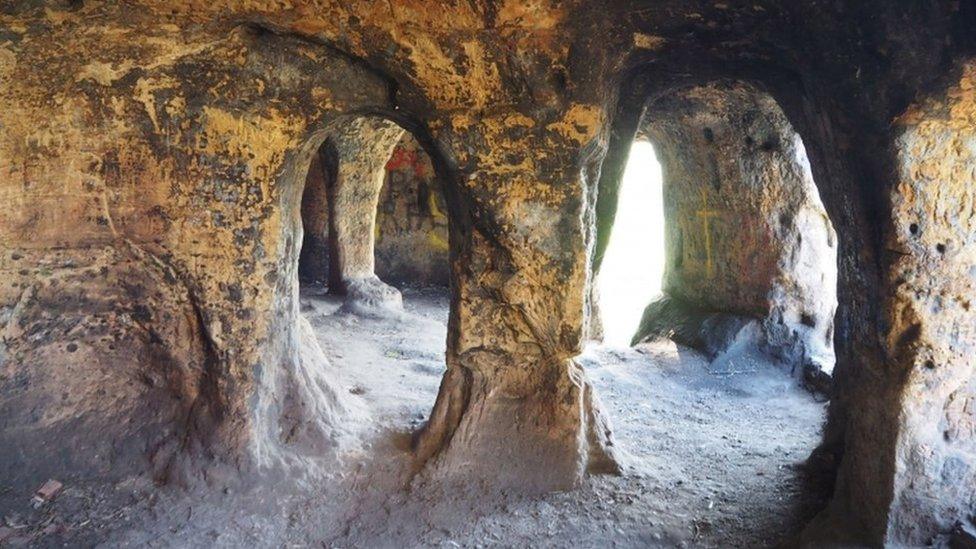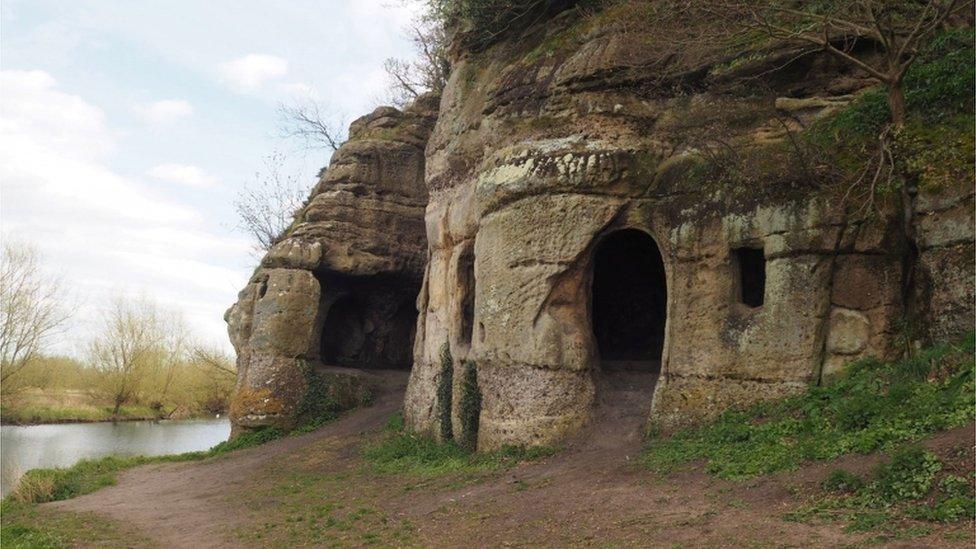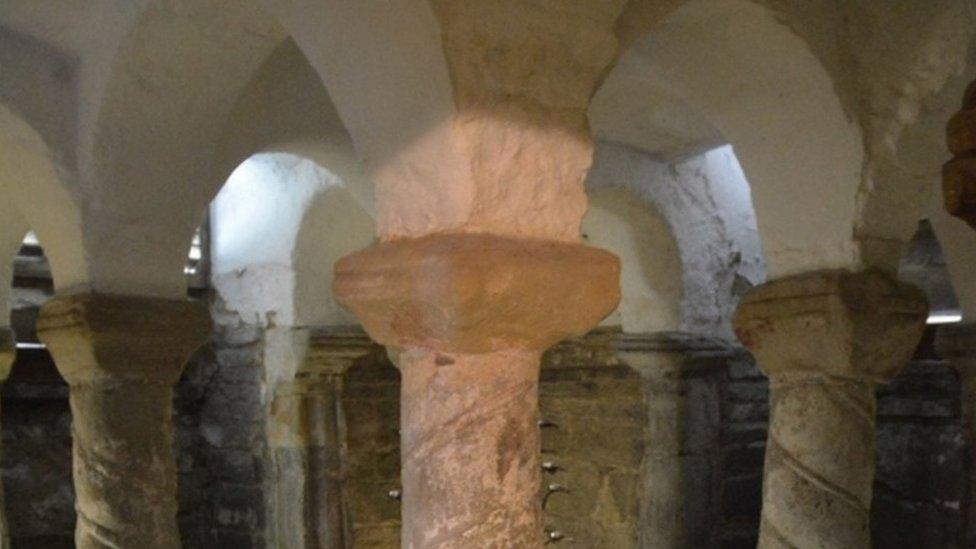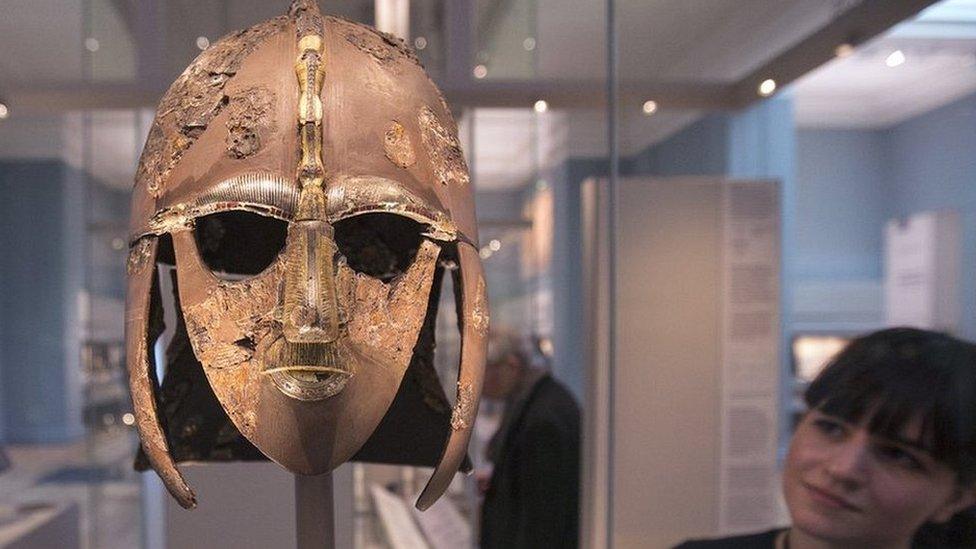Anglo-Saxon cave could be UK's 'oldest domestic interior'
- Published

Archaeologists have suggested the caves could have been home to a deposed ruler of the kingdom of Northumbria
A near-complete Anglo-Saxon cave house, that is believed to date from the early ninth century and could have been home to a king, has been identified.
The Grade II-listed Anchor Church Caves, in Derbyshire, were previously thought to be 18th Century follies.
However a new study suggests the dwelling, which includes a small oratory - or chapel - is more likely to be from early medieval times.
Experts said the caves could be the UK's oldest intact domestic dwelling.
'Medieval hermits'
The survey of the caves, between Foremark and Ingleby, was carried out by archaeologists from the Royal Agricultural University's (RAU) Cultural Heritage Institute, working with Wessex Archaeology.
Edmund Simons, principal investigator of the project, said: "Our findings demonstrate this odd little rock-cut building in Derbyshire is more likely from the ninth century than from the 18th Century, as everyone had originally thought.
"This makes it probably the oldest intact domestic interior in the UK - with doors, floor, roof, windows etc - and, what's more, it may well have been lived in by a king who became a saint."

The cave has legendary associations with Saint Hardulph - believed to be a former king
The archaeologists used detailed measurements, a drone survey, and a study of architectural details to reconstruct the original plan of three rooms and an easterly-facing oratory.
Researchers say the narrow doorways and windows of the rooms in the dwellings closely resemble Saxon architecture.
The team said that while such caves were often associated with medieval hermits, there was also a legendary association between the Anchor Church Caves and Saint Hardulph.
A fragment of a 16th Century printed book states "Saint Hardulph has a cell in a cliff a little from the [River] Trent" and local folklore identifies these caves as those Hardulph occupied.

The architecture shares similarities with Saxon buildings, researchers say
Modern scholarship identifies Hardulph with King Eardwulf, who was deposed as king of Northumbria in AD806 and was buried at Breedon on the Hill in Leicestershire, just five miles from the caves.
Mr Simons said: "The architectural similarities with Saxon buildings, and the documented association with Hardulph/Eardwulf, make a convincing case that these caves were constructed, or enlarged, to house the exiled king."
Mark Horton, professor of archaeology at the RAU, added: "It is extraordinary that domestic buildings over 1,200 years old survive in plain sight, unrecognised by historians, antiquarians and archaeologists."

Follow BBC East Midlands on Facebook, external, Twitter, external, or Instagram, external. Send your story ideas to eastmidsnews@bbc.co.uk, external.
Related topics
- Published20 September 2016
